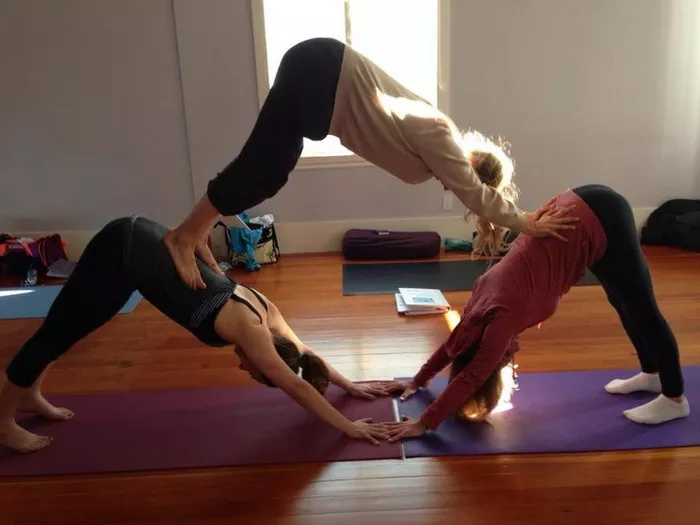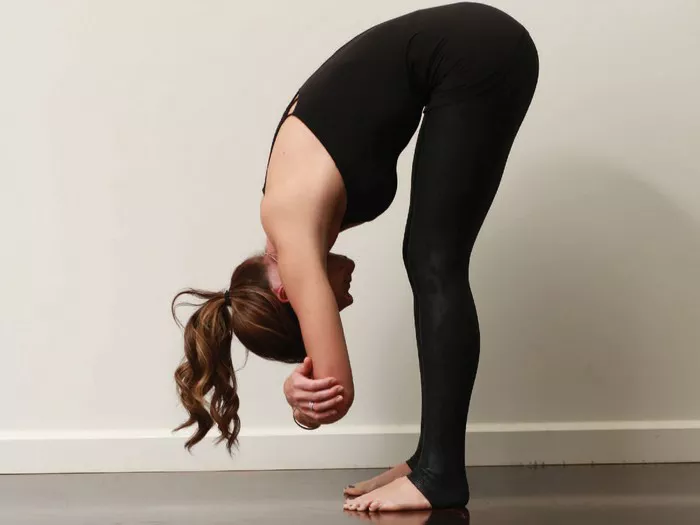Yoga, an ancient practice originating in India, has evolved into a global phenomenon, embraced for its physical, mental, and spiritual benefits. Among the myriad of yoga practices, partner and group yoga offer unique opportunities for connection and exploration. In recent years, three-person yoga poses, in particular, have gained popularity for their collaborative nature and the additional challenge they present. In this article, we delve into the dynamics of three-person yoga poses, exploring their intricacies and offering insights into some of the most popular variations.
Understanding Three-Person Yoga Poses
Three-person yoga poses, also known as trio yoga or group yoga, involve three individuals working together to achieve various postures. These poses require synchronization, communication, trust, and balance among all participants. Unlike traditional solo yoga, three-person poses add an element of coordination and teamwork, making them both physically and mentally stimulating.
The Importance of Communication and Trust
Effective communication is essential in three-person yoga poses to ensure safety and alignment. Participants must communicate clearly about their intentions, movements, and limitations to prevent accidents or injuries. Trust is equally crucial, as individuals must rely on each other’s support and stability to maintain balance and execute poses successfully. Establishing trust fosters a sense of camaraderie and unity among participants, enhancing the overall yoga experience.
Key Considerations for Three-Person Yoga Poses
Before attempting three-person yoga poses, it’s vital to consider several factors to ensure a safe and enjoyable practice:
1. Skill Level: Participants should have a basic understanding of yoga fundamentals and possess adequate strength, flexibility, and balance to attempt three-person poses safely.
2. Physical Limitations: Individuals with pre-existing injuries or physical limitations should consult with a healthcare professional before engaging in three-person yoga. Modifications may be necessary to accommodate specific needs and ensure comfort and safety.
3. Partner Compatibility: Choosing compatible partners is crucial for successful three-person yoga practice. Participants should have similar abilities, communication styles, and levels of trust to facilitate seamless coordination during poses.
4. Warm-Up and Preparation: Prior to attempting three-person poses, participants should engage in a thorough warm-up routine to prepare their bodies for the physical demands of the practice. Warm-up exercises may include dynamic stretches, joint mobilization, and breathing techniques.
5. Spotter Presence: Having a designated spotter or observer can provide an extra layer of safety during three-person yoga practice, especially for challenging or advanced poses. The spotter can offer assistance, guidance, and feedback to ensure proper alignment and prevent injuries.
Popular Three-Person Yoga Poses
While the possibilities for three-person yoga poses are virtually endless, several poses have emerged as favorites among practitioners. Here are some popular variations:
1. Triangle Trio Pose (Trikonasana Variation)
- Description: In this variation of Trikonasana (Triangle Pose), three participants stand side by side, with each person forming one side of the triangle. Participants extend their arms overhead and lean towards each other, creating a triangular shape with their bodies.
- Benefits: Triangle Trio Pose improves balance, stretches the hamstrings and side body, and enhances coordination and communication among participants.
- Execution: Participants stand with their feet wide apart, facing forward. Each person extends their arm overhead and leans towards the center, maintaining a straight line from head to heel. Participants can use each other for support and stability, adjusting their positioning as needed for comfort and alignment.
2. Group Boat Pose (Navasana Variation)
- Description: In this variation of Navasana (Boat Pose), three participants sit in a circle, facing each other, with their legs extended and feet touching. Participants hold hands and lean back, lifting their legs off the ground to form a boat shape.
- Benefits: Group Boat Pose strengthens the core, improves balance and concentration, and fosters a sense of unity and cooperation among participants.
- Execution: Participants sit upright, with their legs extended and feet touching. Holding hands with their neighbors, they lean back simultaneously, engaging their core muscles to lift their legs off the ground. Participants strive to maintain balance and coordination while supporting each other in the pose.
3. Triple Downward Dog Pose (Adho Mukha Svanasana Variation)
- Description: In this variation of Adho Mukha Svanasana (Downward Dog Pose), three participants form a triangle shape with their bodies. One person assumes the traditional Downward Dog position, while the other two individuals position themselves in a plank pose, with their feet resting on the shoulders of the person in Downward Dog.
- Benefits: Triple Downward Dog Pose strengthens the upper body, core, and legs, improves flexibility, and enhances communication and trust among participants.
- Execution: One participant begins in Downward Dog Pose, with their hands shoulder-width apart and hips lifted towards the ceiling. The other two participants position themselves in plank pose, with their hands directly under their shoulders and feet resting on the shoulders of the person in Downward Dog. Participants maintain alignment and stability while supporting each other in the pose.
Safety Precautions and Tips
While three-person yoga poses offer numerous benefits, it’s essential to prioritize safety and mindfulness during practice. Here are some safety precautions and tips to consider:
1. Start Slowly: Begin with simpler poses and gradually progress to more advanced variations as participants become more comfortable and confident in their abilities.
2. Listen to Your Body: Encourage participants to honor their bodies’ limitations and avoid pushing themselves beyond their comfort zone. Discomfort or pain may indicate improper alignment or overexertion.
3. Use Props and Support: Incorporating props such as yoga blocks, straps, or bolsters can provide additional support and stability during three-person poses, especially for beginners or individuals with limited flexibility.
4. Stay Hydrated: Remind participants to stay hydrated before, during, and after their yoga practice to prevent dehydration and promote overall well-being.
5. Practice Mindfulness: Encourage mindfulness and presence throughout the practice, focusing on breath awareness and cultivating a sense of gratitude for the shared experience.
Conclusion
Three-person yoga poses offer a dynamic and engaging way to deepen connections, improve communication, and enhance physical fitness. By embracing collaboration, trust, and coordination, participants can explore new dimensions of their yoga practice while fostering a sense of community and unity. With proper preparation, communication, and mindfulness, practitioners can safely enjoy the benefits of three-person yoga poses and embark on a journey of shared growth and exploration.























